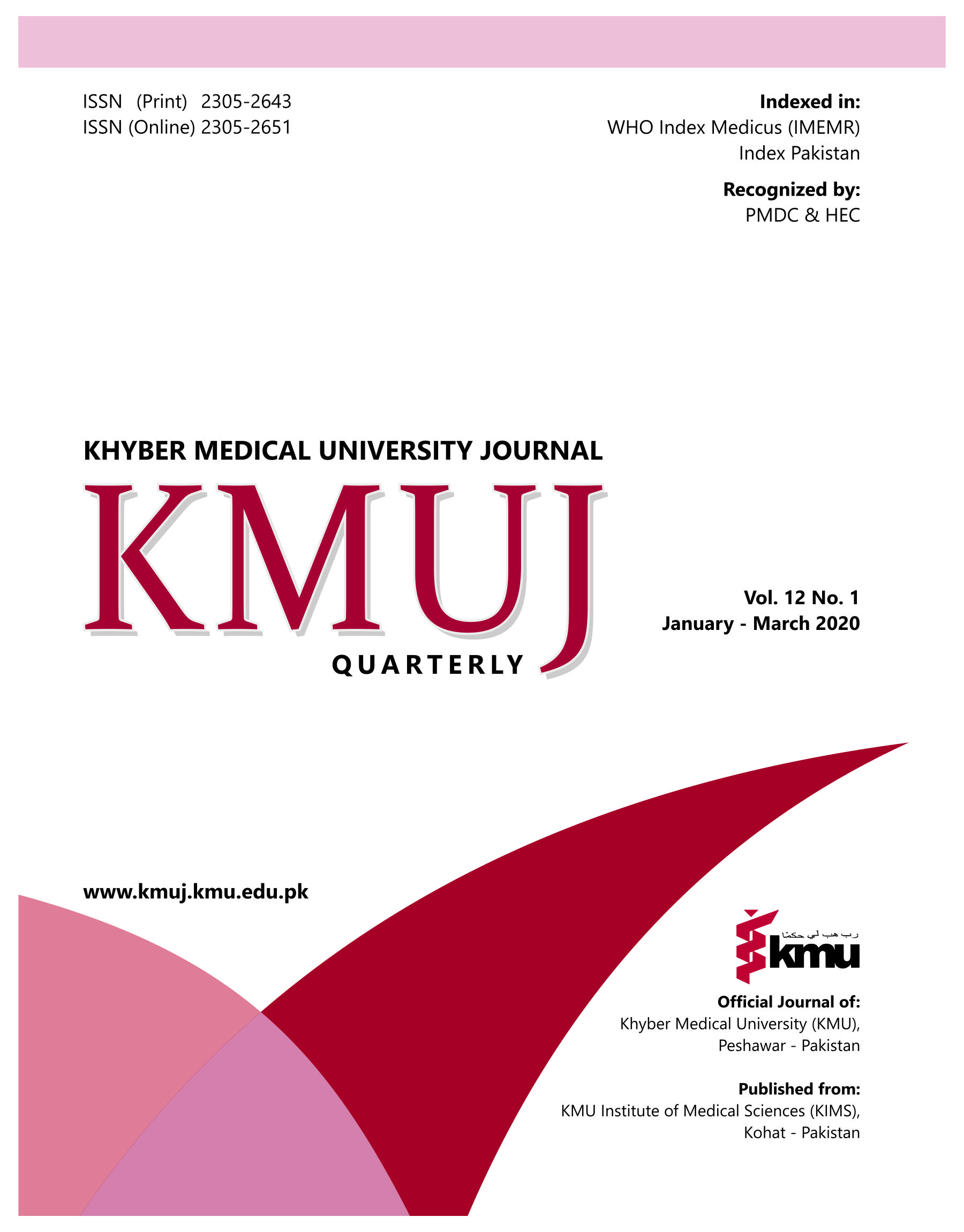PRIMARY MYXOPAPILLARY EPENDYMOMA OF FOURTH VENTRICLE: FIRST CASE REPORT IN A TWO-YEAR-OLD CHILD
Main Article Content
Abstract
Myxopapillary ependymoma (MPE), a rare pathological subtype of ependymoma which shows predilection for middle-aged adults between third and fifth decades of life. It is a benign tumor that primarily occurs at filum terminale of spinal cord with a rare possibility to metastasize to the brain. Primary intracranial MPEs have been reported only rarely. Two-year-old child presented with a space-occupying lesion in fourth ventricle. Based on clinical and radiological findings, particularly owing to patient’s age differential diagnosis of medulloblastoma was considered. Biopsy followed by histopathological and immunohistochemical analysis yielded diagnosis of primary intracranial myxopapillary ependymoma.
In conclusion, MPEs can occur anywhere in intracranial space and in any age group. Despite their indolent behavior, their metastatic potential necessitates thorough investigation to rule out former before establishing diagnosis of primary intracranial MPE.
Article Details
Work published in KMUJ is licensed under a
Creative Commons Attribution 4.0 License
Authors are permitted and encouraged to post their work online (e.g., in institutional repositories or on their website) prior to and during the submission process, as it can lead to productive exchanges, as well as earlier and greater citation of published work.
(e.g., in institutional repositories or on their website) prior to and during the submission process, as it can lead to productive exchanges, as well as earlier and greater citation of published work.
References
Wang H, Zhang S, Rehman SK, Zhang Z, Li W, Makki MS, et al. Clinicopathological features of myxopapillary ependymoma. J Clin Neurosci 2014;21(4):569-73. DOI: 10.1016/j.jocn.2013.05.028.
Salomao JF, de Andrade CV, Bellas AR, Cervante TP. The nature of double concomitant myxopapillary ependymoma: report of a case. Child's Nerv Sys 2014;30(3):527-30. DOI: 10.1007/s00381-013-2251-0.
Khalatbari MR, Moharamzad Y. Primary cerebral myxopapillary ependymoma presenting with intratumoral hemorrhage. Br J Neurosurg 2014;28(4):523-4. DOI: 10.3109/02688697.2013.859656.
Cimino PJ, Agarwal A, Dehner LP. Myxopapillary ependymoma in children: a study of 11 cases and a comparison with the adult experience. Pediatr Blood Cancer 2014;61(11):1969-71. DOI: 10.1002/pbc.25125.
Patangia P, Rai NN, Saxena R, Mandawat PS. Primary intracerebral myxopapillary ependymoma: A rare case report. Annals Pathol Lab Med 2016;3(5):C236-40.
Rogers S, Jones DT, Ireland A, Gottardo NG, Endersby R. Unusual paediatric spinal myxopapillary ependymomas: Unique molecular entities or pathological variations on a theme? J Clin Neurosci 2018;50:144-8. DOI: 10.1016/j.jocn.2018.01.048.
DiLuna ML, Levy GH, Sood S, Duncan CC. Primary myxopapillary ependymoma of the medulla: case report. Neurosurgery 2010;66(6):E1208-9; discussion E9. DOI: 10.1227/01.NEU.0000369513.84063.A6.
Lucchesi KM, Grant R, Kahle KT, Marks AM, DiLuna ML. Primary spinal myxopapillary ependymoma in the pediatric population: a study from the Surveillance, Epidemiology, and End Results (SEER) database. J Neurooncol 2016;130(1):133-40. DOI: 10.1007/s11060-016-2218-6.
Mewada TB, Bishnoi IH, Singh H, Singh D. Occipital Intraparenchymal Myxopapillary Ependymoma: Case Report and Literature Review. Asian J Neurosurg 2017;12(4):731-4. DOI: 10.4103/ajns.AJNS_45_15.
Margetis K, Koutsarnakis C, Stranjalis G. Primary cerebellar myxopapillary ependymoma. J Neurooncol 2011;104(3):839-40. DOI: 10.1007/s11060-011-0535-3.
